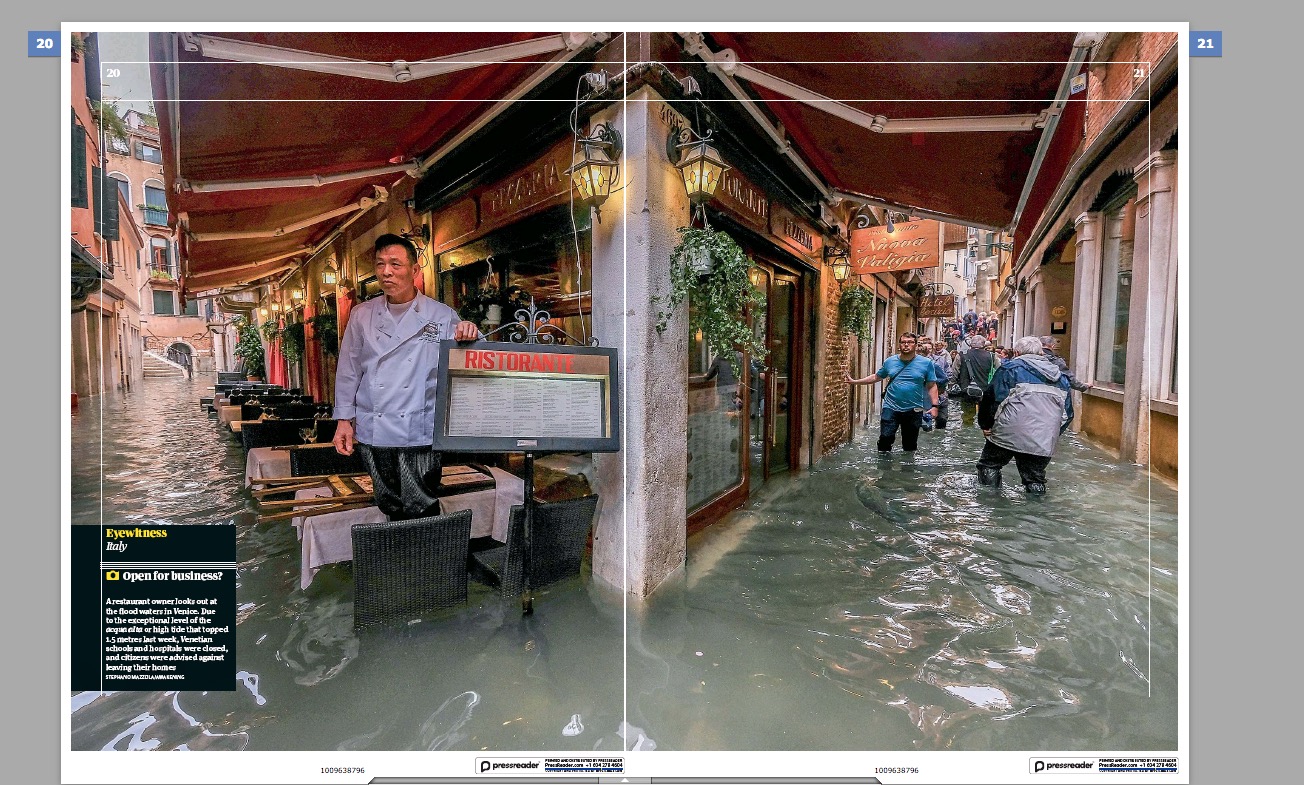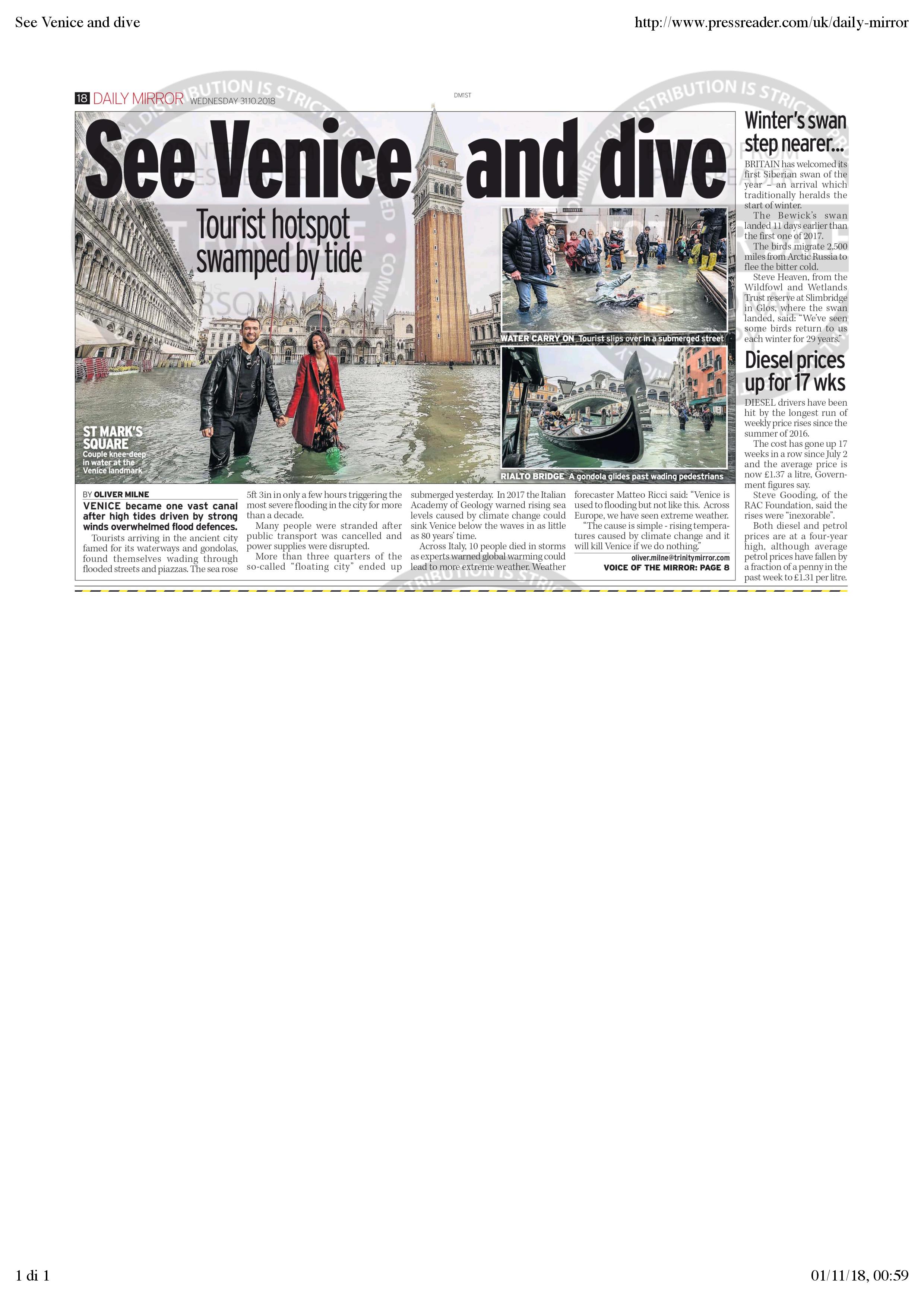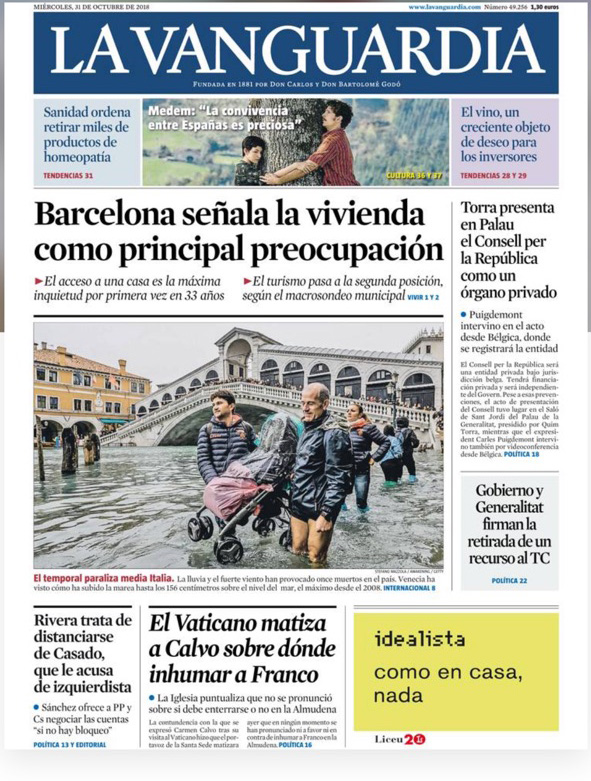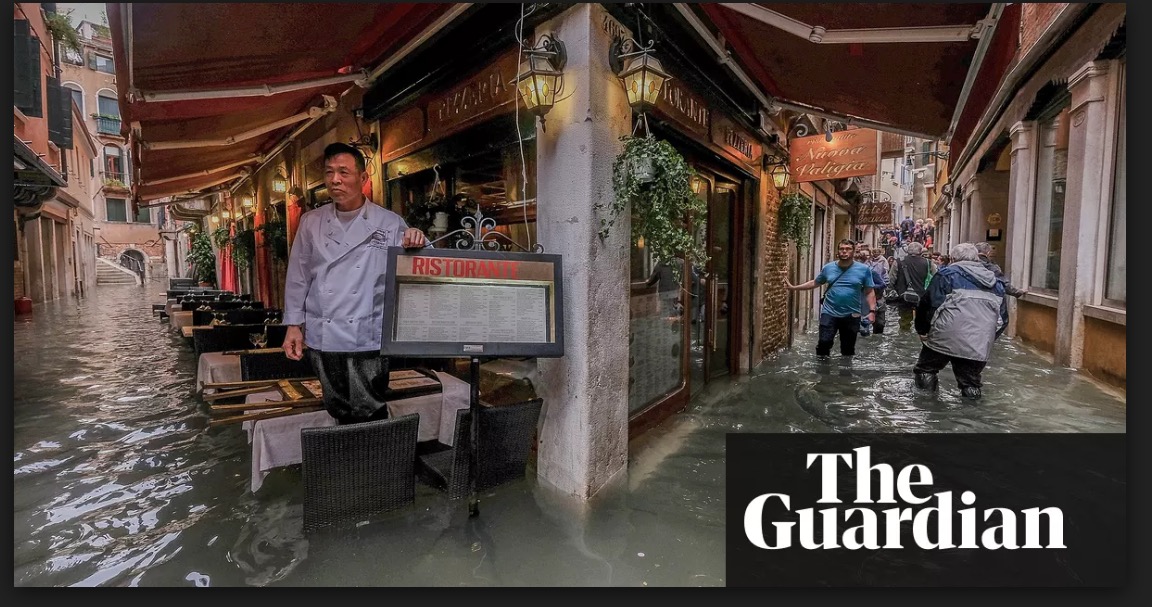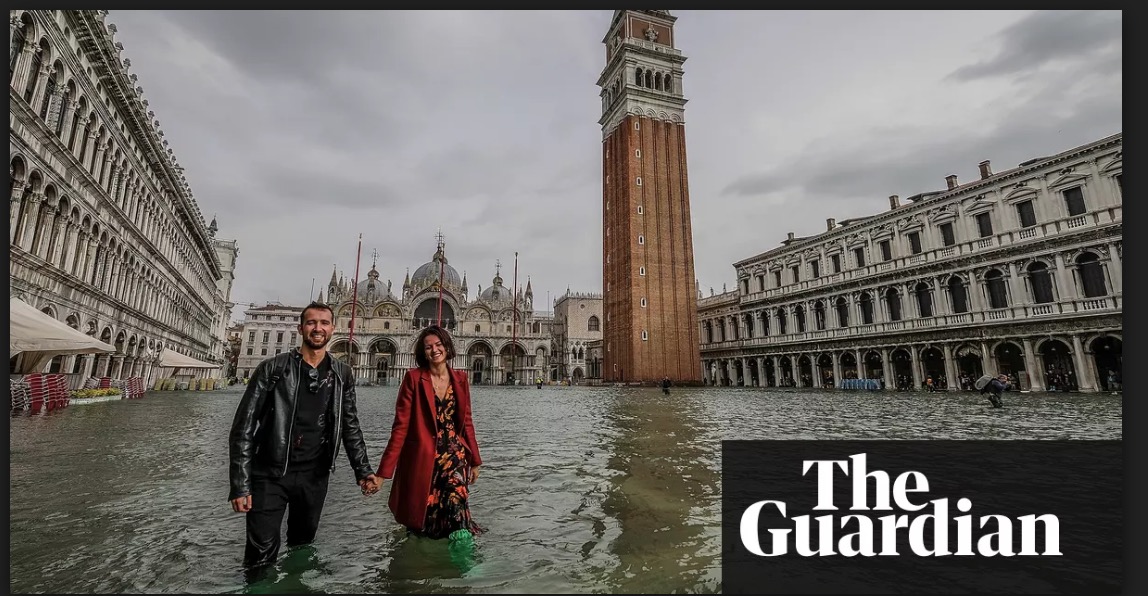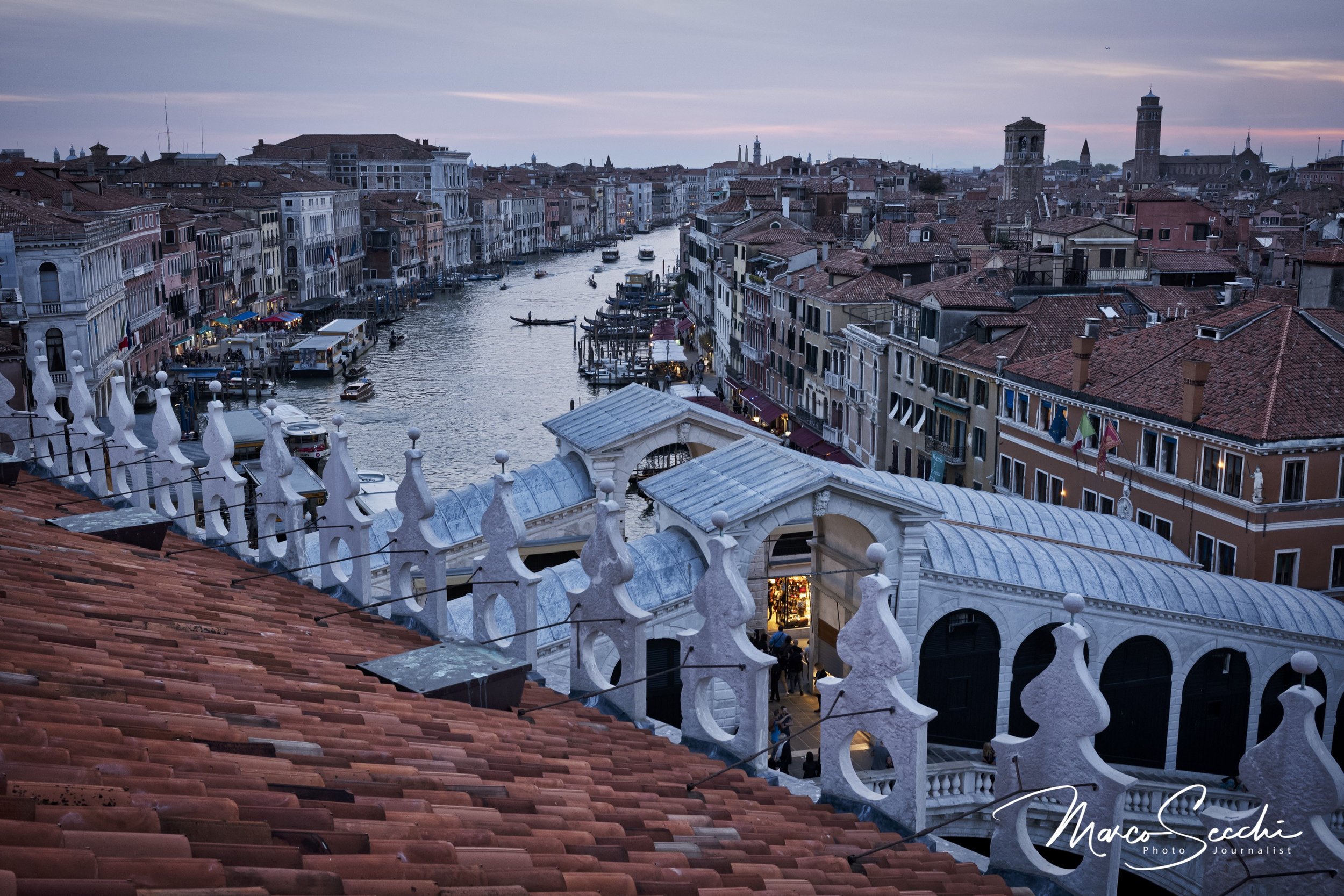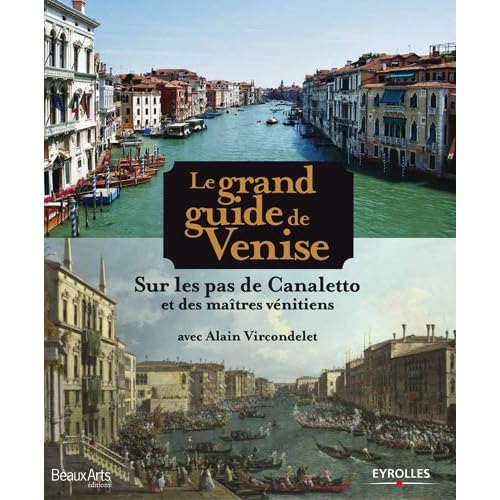With its 99 metres of height, St Mark’s Campanile offers the best view over the city and its lagoon! However, many visitors often skip this fascinating landmark discouraged because of long queues at the entrance, and prefer spending more time sightseeing, but you can book online your St Mark's Campanile tickets: the price includes a privileged skip-the-line entrance to San Marco Bell Tower which permits you to avoid the wastage of your precious time.
The imposing structure of the St Mark’s Bell Tower in Venice - and especially its great height – gives the profile of Venice an unmistakable symbol of greatness: the St Mark’s Campanile in Venice overlooks the entire city and the surrounding lagoon, allowing those who climb it, particularly on clear days, to enjoy far-reaching views that extend almost as far as the Alps.
Built with the purpose of serving as a beacon for sailors of the lagoon, the original Piazza San Marco Bell Tower was built on Roman foundations - probably a watch tower - and completed in 1173. After various changes and transformations over the centuries, the current form of the Campanile of St. Mark's Square Venice is in line with the architecture of the 15th century, when it was renovated and designed by Giorgio Terror, under the direction of Bartolomeo Bon. The main differences can be seen in the marble belfry, the addition of the upper structure with four faces – on which the Lion of San Marco and Venice appear - and the slender spire of bronze bearing on the tip a golden statue of the Archangel Gabriel which, placed on a turntable, acts as a wind vane. The height of St Mark’s Campanile is almost 100 m.
Each of the five bells placed in the loggia of St Mark's Campanile has a role: the 'Marangona' - the only surviving original - announced the beginning and end of the working days of the 'cormorant' (carpenters Arsenal) and meetings of the Great Council; the 'Nona' marks the south and the 'Trottiera' warned the nobles who were attending the meetings of the Great Council, and the 'Mezza Terza' informed the meeting of the Senate, and finally the 'Malefico' informed of an execution.
In the history of science, the Campanile in St Mark’s Square in Venice reached its moment of glory in 1609 when Galileo proved right here the effectiveness of his telescope.
A special mention is deserved for the loggia of St Mark's Campanile - at the base of the tower - facing the basilica, which was built in the 16th century by Jacopo Sansovino. The marble structure of the loggia is decorated with statues and portraits of classical taste that represent allegories to celebrate the Venice Republic. The loggia was also the seat of the guard of Arsenalotti, the prestigious military-corporation of workers employed in the Arsenal of Venice, who stood guard at the meetings of the Great Council. Along with the bell tower, the work of Sansovino 'separates' St Mark’s Square from the smaller St Mark’s square.
On 14 July 1902 the St Mark’s Bell Tower Venice collapsed on the square: fortunately with no casualties or serious damage to the surrounding architectural treasures, but the tower and below the loggia were almost completely destroyed. Recovering what was left of the original fragments, the San Marco Campanile was rebuilt 'where it was and how it was' - the famous phrase given by the mayor Grimani in his speech after the incident – on 25 April 1912.
For those wishing to visit Venice, the majestic St Mark's Campanile admission and Sansovino loggia remain one of the attractions not-to-be-missed.
St Mark’s Campanile opening times for skip-the-line entrance
The service is only available from 1 April to 31 October. St Mark’s Campanile Venice tickets can be purchased online up to 10 minutes before the selected entrance time.
Please note that, during the daytime, there are at least two time options available per hour (12 places available for each option) according to the time slot you choose to access the Campanile di San Marco with skip-the-line service.
10.15 / 10.30 / 10.45 am
11.15 / 11.30 / 11.45 am
12.15 / 12.30 / 12.45 pm
1.15 / 1.30 / 1.45 pm
2.15 / 2.30 / 2.45 pm
3.00 / 3.30 / 3.45 pm
4.15 / 4.30 / 4.45 pm
5.00 / 5.15 / 5.30 / 5.45 pm
6.00 pm
Campanile di San Marco ticket price: €8.00 (this ticket can be purchased only on the spot and does not include the skip-the-line access)
Campanile San Marco tickets with skip-the-line access
Full: €13.00
Concessions
Children up to 5 years old: free
From 6 to 18 years old: €9.00
PLEASE NOTE: to enjoy free admission to the bell tower, children up to 5 years old have to be held in their parents' arms. Otherwise children need a reduced ticket 6-18 years old because, as a matter of fact, they take up one of the places available in the lift.
You can go up and down the bell tower exclusively via lift: it is not possible to walk up, therefore this visit is not recommended to those who suffer from claustrophobia.
The visit to St Mark’s Campanile in Venice, Italy, will be suspended in case of unfavourable weather conditions (fog, strong wind, intense cold temperatures, ...).
For ticket holders with skip-the-line access to St Mark’s Campanile, the entrance door is located on the side of the tower connected to St Mark’s Square: once you are in front of the Campanile main entrance, you will find the door for visitors with online booking on the right. The voucher you receive at the end of the booking process contains all the instructions to help you reach the meeting place.
The online reservation for Campanile San Marco in Venice (ticket + skip-the-line service) is non-refundable: once the payment has been made, the booking cannot be changed and/or cancelled.
For reasons of force majeure (e.g. high water level) or in days with high turnout, the waiting time to go up the bell tower could last longer than expected. If such were the case, please respect the instructions given by the staff on site.









